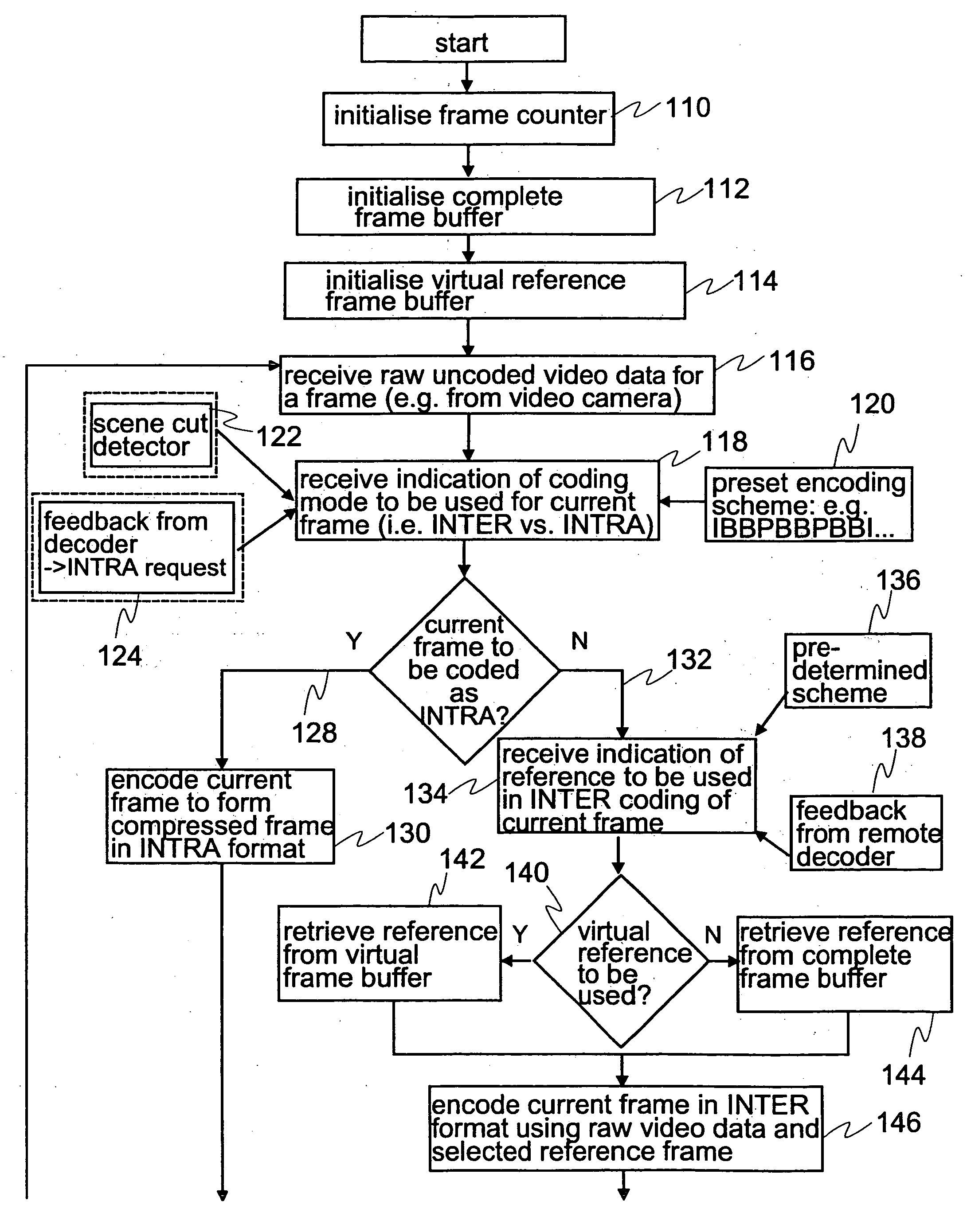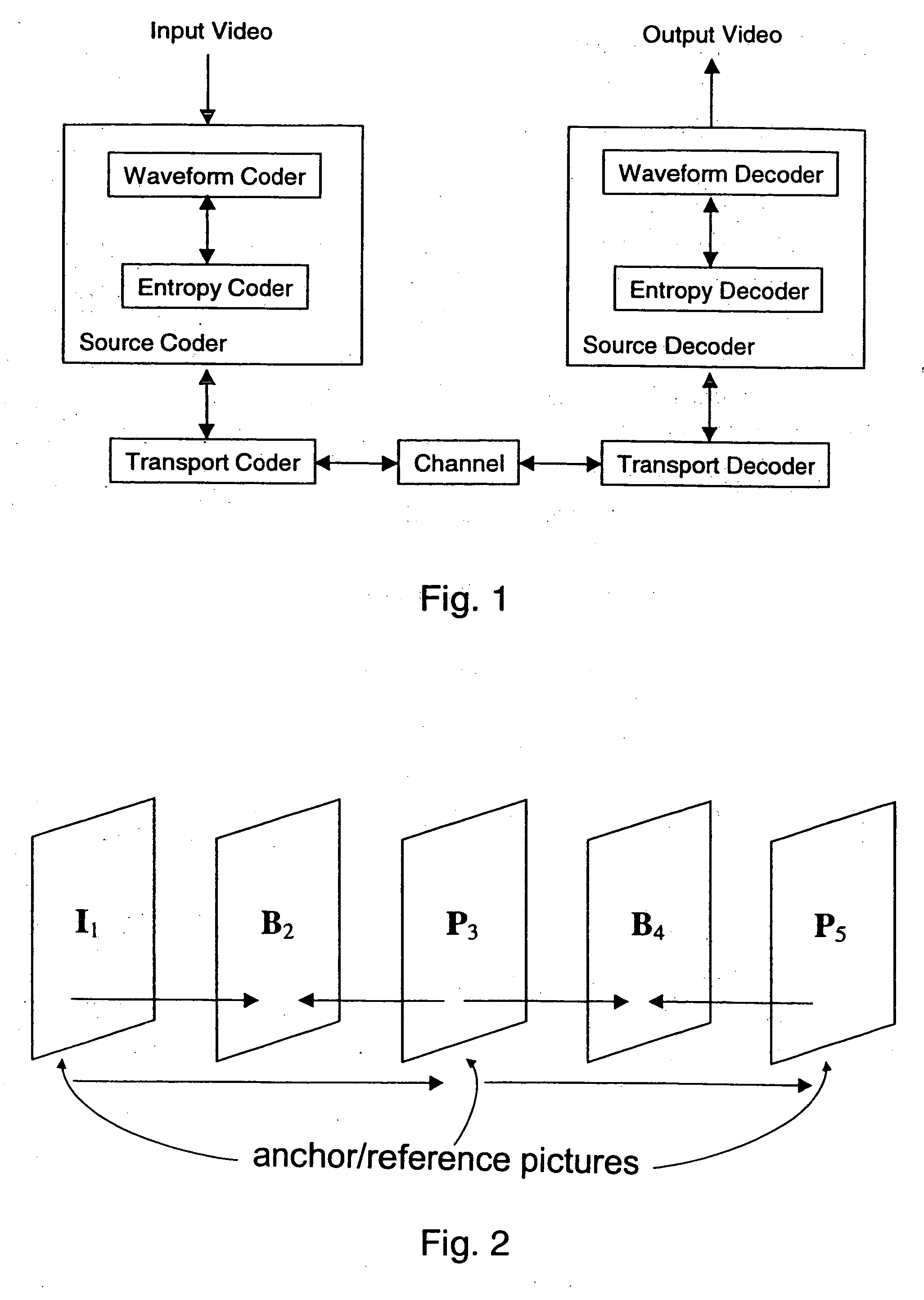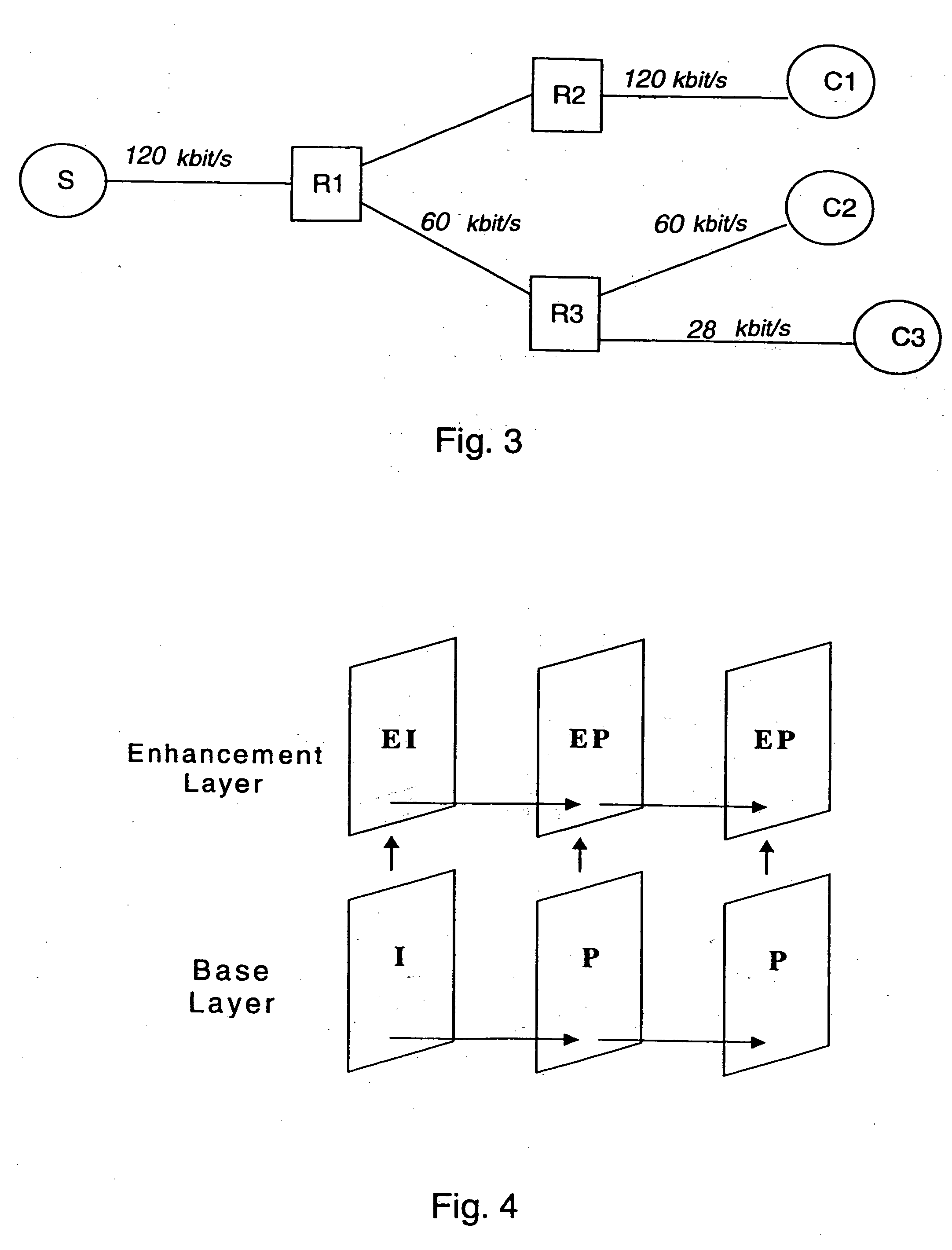Video coding
a video and coding technology, applied in the field of data transmission, can solve the problems of inability to achieve a sufficient level of compression, the gateway may occasionally have to discard datagrams, and the video encoders also try to reduce the quality of those parts of the video sequen
- Summary
- Abstract
- Description
- Claims
- Application Information
AI Technical Summary
Benefits of technology
Problems solved by technology
Method used
Image
Examples
Embodiment Construction
[0236] FIGS. 1 to 17 have been described in the foregoing.
[0237] The invention will now be described in greater detail as a set of procedural steps with reference to FIG. 18, which illustrates an encoding procedure carried out by an encoder and to FIG. 19, which illustrates a decoding procedure carried out by a decoder corresponding to the encoder. The procedural steps presented in FIGS. 18 and 19 may be implemented in a video transmission system according to FIG. 16.
[0238] Reference will first be made to the encoding procedure illustrated by FIG. 18. In an initialization phase, the encoder initialises a frame counter (step 110), initialises a complete reference frame buffer (step 112) and initialises a virtual reference frame buffer (step 114). The encoder then receives raw, that is uncoded, video data from a source (step 116), such as a video camera. The video data may originate from a live feed. The encoder receives an indication of the coding mode to be used in the coding of a...
PUM
 Login to View More
Login to View More Abstract
Description
Claims
Application Information
 Login to View More
Login to View More - R&D
- Intellectual Property
- Life Sciences
- Materials
- Tech Scout
- Unparalleled Data Quality
- Higher Quality Content
- 60% Fewer Hallucinations
Browse by: Latest US Patents, China's latest patents, Technical Efficacy Thesaurus, Application Domain, Technology Topic, Popular Technical Reports.
© 2025 PatSnap. All rights reserved.Legal|Privacy policy|Modern Slavery Act Transparency Statement|Sitemap|About US| Contact US: help@patsnap.com



